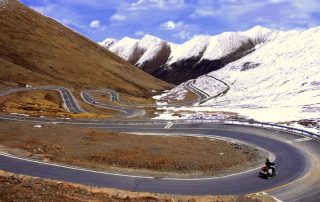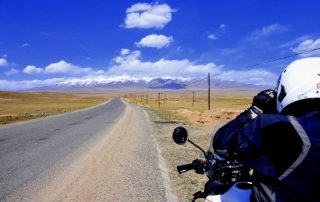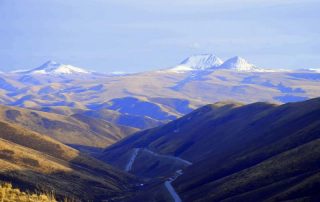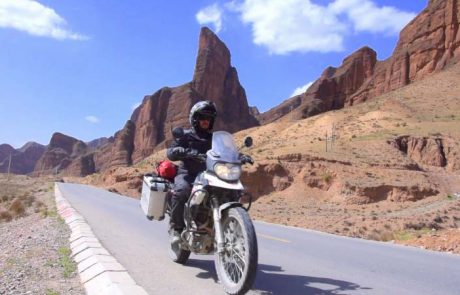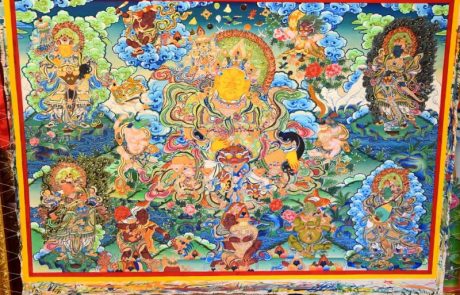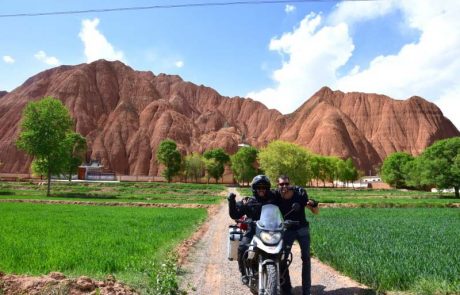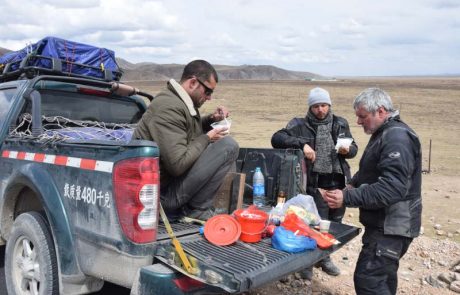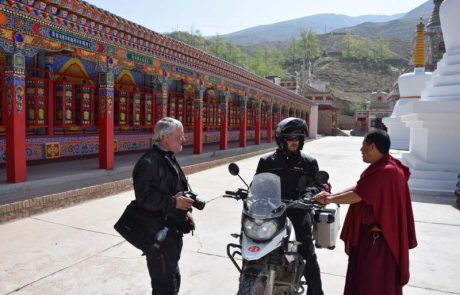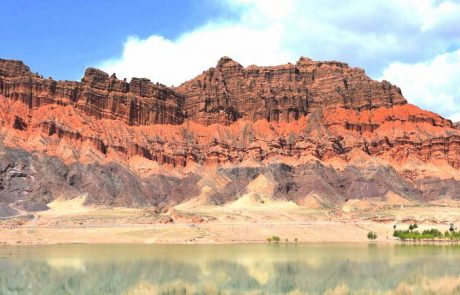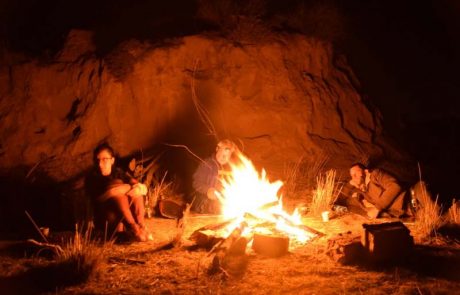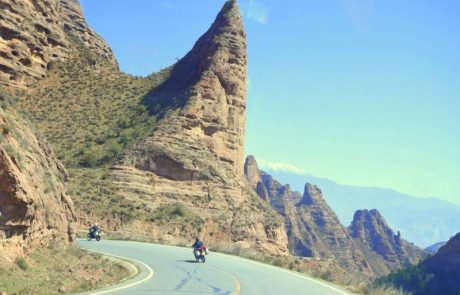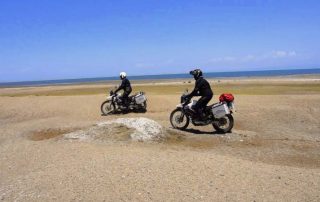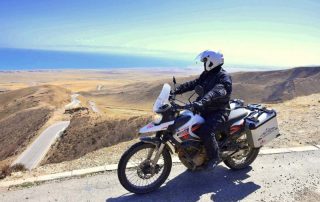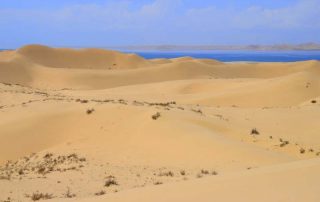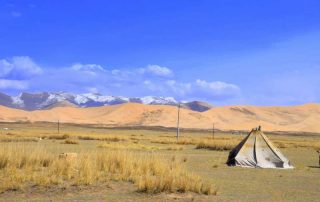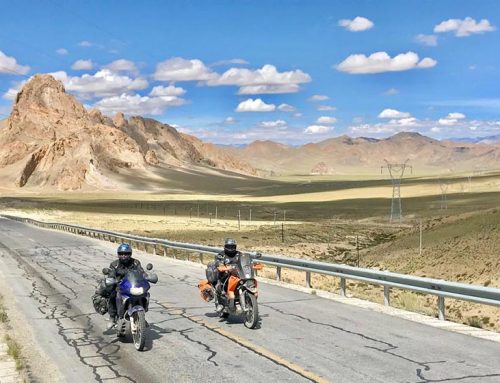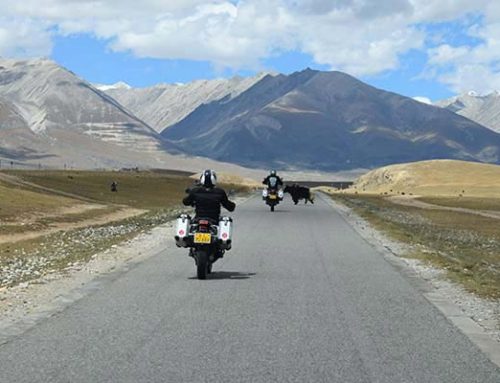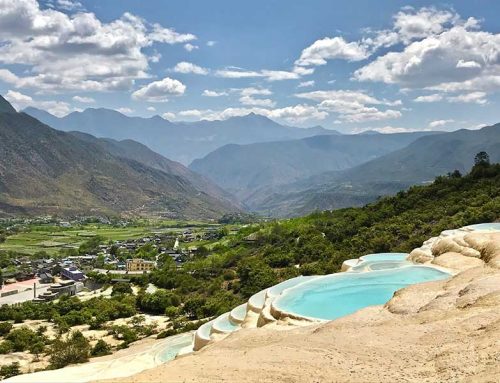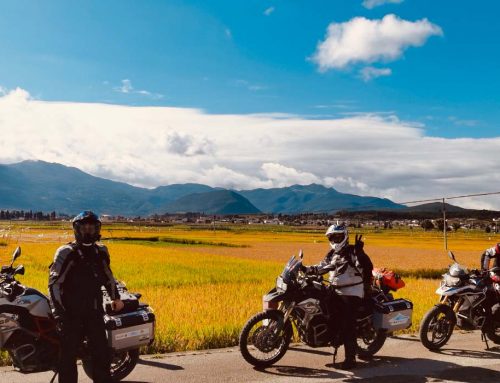China Motorbike Scouting Tour: 2.Part
With the Motorbike to the Yellow River & Qinghai Lake
Through the high steppes to Langmuse
We find ourselves once again experiencing a day of superlatives on our Chinese motorbike expedition. We manage six passes of more than 4000 meters before the day has ended. The 340 km stretch of road goes by as though we were flying, thanks to the perfect condition of the road. The asphalt quality allows a cool lean angle when cornering. However, for a while, it did not look like we were going to make it this far.
After Seda and the replacement of a broken clutch cable, we almost got lost. The road signs were, in fact, pointing in the wrong direction. The locals, fortunately, gave us directions and showed us the correct road to follow. And it takes us into no man’s land. For the first time, we are gripped by a feeling of lonely remoteness. There are no signs of human life except the road that we are riding on. The next town, Baima, is pretty unspectacular. However, a police officer informs us that Baima, unfortunately, is off-limits to foreigners. We must drive to the next district. There is no hotel that has room for us. The official, amusing reason was that a 4-star hotel had not yet been built. Because of that, foreigners could not be offered rooms of a suitable quality.
Whether we even would want that was not a question anyone asked us. We would also have been satisfied with more inexpensive lodging. It was already after 5 o’clock and the next town was over 150km away.
It doesn’t matter; we ride down the winding road at the highest possible speed. At the next intersection, we find police officers waiting for us to show us the right way. Will they really escort us out of the district? They are friendly but definite. We have to move on.
It is a shame to abandon this world of mountain steppes glowing in the setting sun, but the roads are not slippery, the landscape melts away like a glacier from global warming, and we slowly start to freeze as the sun goes down. In the last, failing light of day, we reach the next town and a decadent hotel with hot water and cold beer.
The next day, seemingly endless grasslands unfold in front of us on the road to Labrang.
Labrang’s Tibetan karaoke bar
Labrang is a large temple complex, built at an altitude of 2800m. Even today, the monastery is an important institute of learning in Tibet. In the 18th century, it developed into an important trade center because of its geographical position between the Silk Road and Tibet. An exotic evening’s entertainment awaits us here. Classical Tibetan songs and dances are performed; it is difficult to distinguish between karaoke and real singing. In spite of that, if the performance has been good, a member of the audience will drape a white shawl, the so-called Hada, on the artist (the artists are women). Sometimes, when an artist has been given many Hadas, it is no longer possible to see her clothing. We, on the other hand, are given many Tibetan schnaps (Ara) and end up dancing as well. The music (and the pretty Tibetan women) are also partly responsible.
On the next day, we ride, somewhat later than planned, toward Tongren, the center of Tibetan art and culture. The wind in our faces on the motorbike sobers us up and the last traces of the tiredness from the previous night disappear.
Thangkas and Sandstone Sculptures
It is difficult to imagine the change in the landscape that we experienced today. While the endless grasslands unfold around us, where the Himalayan vultures pounce on the corpses of fat marmots, we ride our motobikes down into the valleys of the Yellow River and find ourselves in a bizarre world of sandstone that appears out of nowhere after the Monument Valley. Jagged sculptures, the hands and fingers of the desert, rise, yellow and orange, into the blue and white heavens. Tongren lies here, an important Tibetan center in a landscape that one would never associate with Tibet.
The well-known Buddhist Thangkas are painted in Tongren. There is a large academy, where the masters pass on their skills. Thangkas represent Buddhist gods as well as mandalas such as the Circle of Life. They are important aids in teaching Buddhist practice. They are used for meditation and are displayed at Buddhist rituals.
Camping in Kanbula National Park
The next morning, we follow the Yellow River upstream. We are now at an altitude of only 1900m; it is warm and dry, and the azure flood waters of the river invite us to take a refreshing bath. Every bend in the road opens up a view of more and more bizarre sandstone mountains until, in Kanbula, we are surrounded by hundred metre high stone pillars. High above the valley, we find a spectacular camping site. We buy some firewood from a nearby Tibetan family and set up a cozy camp. The mountains are lit a glowing orange by the light of the setting sun, and we enjoy the unbelievable silence, immersed in the flickering red of our campfire. Suddenly a bottle of Chivas Regal appears. This is the best thing that could have happenend now, right?
Qinghai-Lake
A culture change comes with the change in the landscape. The Tibetan culture recedes slowly into the background. Many Muslims live in the valley of the Yellow River, and the houses are reminiscent of pueblos. It feels like Central Asia. Today we leave this world behind us. We ride our motorbikes down winding roads on good asphalt, higher and higher into barren badland mountains. No animals, no plants. This is it; this must be the end of the world. The road goes higher and higher and then we are really there, at the end of the world. We look down, and we see, in front of us as far as the eye can see, the Qinghai Lake in all its glory.
At 3,200 metres, one can barely see the far shore of the lake. Wild ducks and screeching gulls fly overhead as we walk along the beach on the shore. We let the day die away while having a beer from our provisions.
Our Scouting Tour ends here. The next day, in Xining, we sit down together and review the route once more in our minds. We think about the stages, the routes, and the road conditions, and are unanimous in our conclusion that this China-to-Tibet motorbike tour is a perfect, unique experience and is, without a doubt, one of the most spectacular adventures that one can experience in China.

